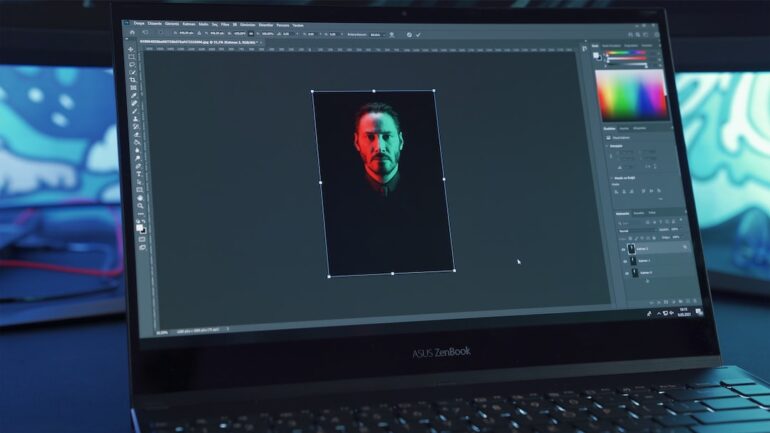TL;DR:
- Leading tech giants aim to bring AI image generators into mainstream software.
- Emphasis on strengthening safeguards against copyright issues and objectionable content.
- Early adopters faced backlash, including copyright lawsuits and calls for regulation.
- Adobe’s “Firefly” emerges as a legal and ethical solution, utilizing proprietary and licensed content.
- OpenAI introduces DALL-E 3 with safeguards, addressing style imitation and author compensation.
- Microsoft and YouTube integrate AI image generation into their platforms.
- A consortium of AI providers, including Adobe and Stability AI, agrees to voluntary safeguards.
- Market professionals emphasize the importance of legal compliance for businesses and creative professionals.
Main AI News:
In the realm of artificial intelligence, a fascinating frontier has emerged—one where ingenious algorithms transform mere words into stunning visual compositions. This innovation took the world by storm last year, captivating imaginations far and wide. Yet, strangely, the majority of individuals have yet to integrate these AI marvels into their daily work and personal lives.
Enter a new era, one where industry juggernauts vie to propel text-to-image generators into the heart of mainstream creativity by seamlessly incorporating them into ubiquitous software like Adobe Photoshop and YouTube. But, before this vision becomes reality, the pioneers in this field are diligently laboring to convince both users and regulators that they have reined in the unruly nature of early AI image generators, erecting robust defenses against copyright infringement and objectionable content.
A mere year ago, a small cadre of early adopters and enthusiasts gleefully dabbled with cutting-edge image generators, including Stable Diffusion, Midjourney, and OpenAI’s DALL-E. “The predecessors were captivating novelties,” admits David Truog, an astute analyst at market research firm Forrester. However, businesses approached these innovations with a degree of trepidation.
What ensued was a wave of backlash, punctuated by copyright disputes with artists and stock photo giant Getty. Calls for new legislation to curb the misuse of generative AI technology in the creation of deceptive political advertisements and explicit imagery added to the cacophony. These issues, although not fully resolved, have given birth to a new wave of image generators declaring their readiness for the business world.
“Alexa, create an image of cherry blossoms in the snow,” is the kind of command that Amazon envisions U.S. customers will soon utter to conjure personalized displays on their Fire TV screens. Adobe, renowned for its groundbreaking Photoshop graphics editor, took the lead this year by introducing an AI generator designed to circumvent the legal and ethical conundrums that plagued competitors, who trained their models on vast internet image repositories.
“When we engage in conversations with customers about generative technology, the prevailing sentiment is that the technology is undeniably impressive, but concerns linger,” reveals Ely Greenfield, Chief Technology Officer for Adobe’s digital media business. To address these concerns, Adobe’s product, aptly named Firefly, draws from its proprietary Adobe Stock image collection, as well as licensed content, ensuring that stock contributors receive due compensation.
Forrester’s Truog confirms, “Adobe Firefly adheres to legal standards, a distinction that may not matter to casual enthusiasts of generative AI.” However, for businesses and creative professionals contemplating the use of images in website design, applications, print layouts, advertising, or email marketing campaigns, the implications are monumental. “You don’t want to find yourself in hot water,” warns Truog.
Competitors are taking notice. OpenAI, the creator of ChatGPT, recently unveiled its third-generation image generator, DALL-E 3, emphasizing its impressive capabilities and forthcoming integration with ChatGPT. OpenAI has also introduced new safeguards to decline requests for images in the style of living artists. Moreover, creators can choose to exclude their work from future model training, although Truog observes that OpenAI has not addressed the issue of compensating authors whose work is utilized for training purposes.
In simultaneous showcase events held in New York City, Microsoft and Google-owned YouTube unveiled their own AI-infused products. Microsoft, a significant investor in OpenAI, showcased the integration of DALL-E 3 into its graphic design tools and Bing search engine, with a focus on background editing. YouTube, on the other hand, introduced the Dream Screen for short videos, enabling creators to craft custom backgrounds.
Earlier this month, both Adobe and Stability AI, the developer of Stable Diffusion, joined a consortium of major AI providers that includes Amazon, Google, Microsoft, and OpenAI. This coalition voluntarily accepted safeguards set forth by President Joe Biden’s administration. Among these safeguards is the requirement for companies to devise methods like digital watermarking to help users discern whether images and content have been generated by AI.
Microsoft executives highlighted their implementation of filters to scrutinize content generated from text prompts in Bing, particularly those featuring prominent political figures. “Our objective is to ensure that we do not produce any objectionable content, such as hate speech,” asserted Sarah Bird, Microsoft’s Global Head for Responsible AI.
Conclusion:
The concerted efforts of tech giants to integrate AI image generators into widely-used software platforms signal a significant step towards making this technology a staple in various industries. By addressing legal and ethical concerns, including copyright theft and content integrity, these developments are poised to open new horizons for businesses and creative professionals, ushering in a transformative era of content creation and design.

